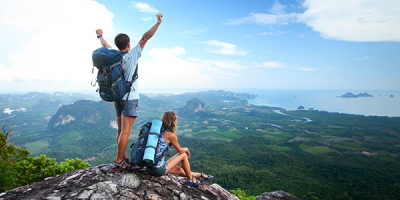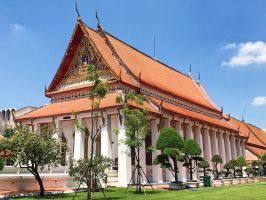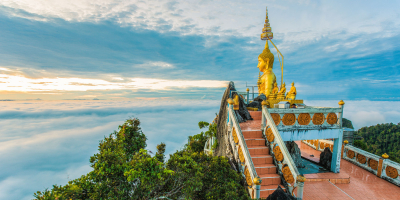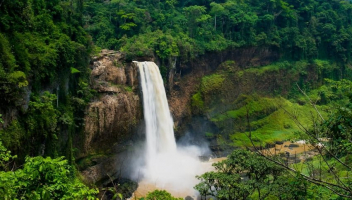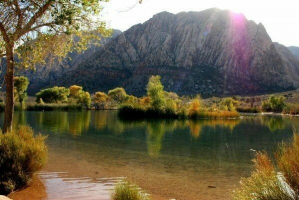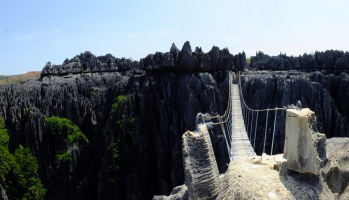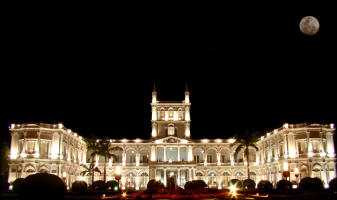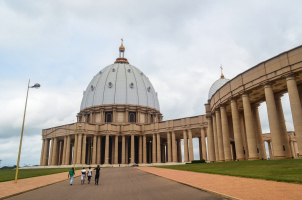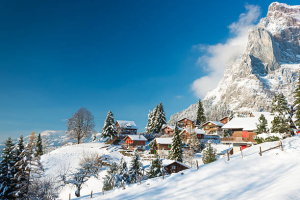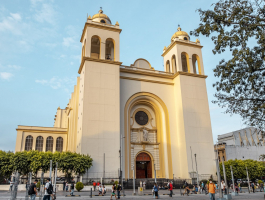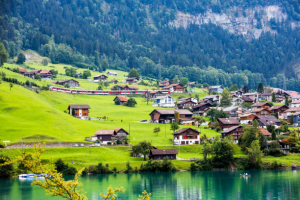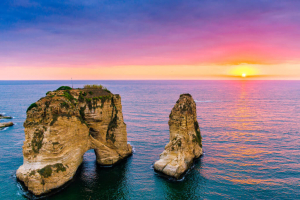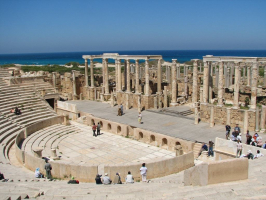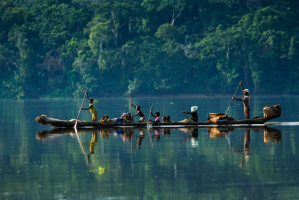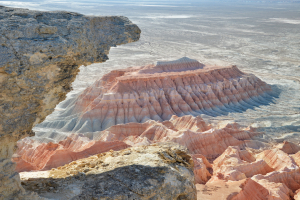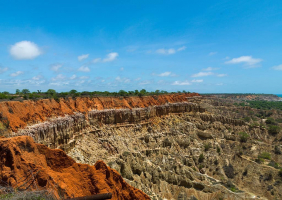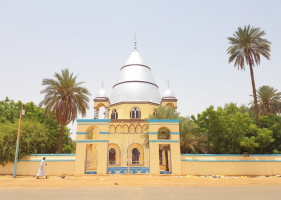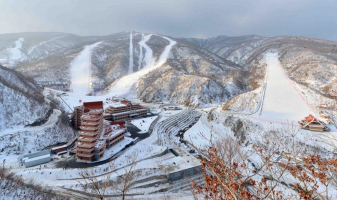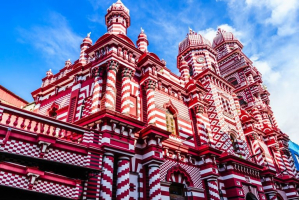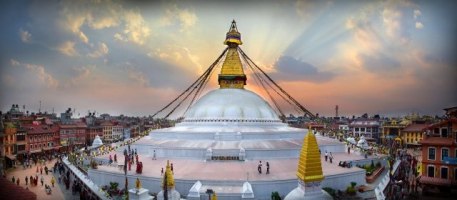Top 14 Best Places To Visit in Thailand
Thailand is a bucket-list holiday destination for many people, with the chaotic appeal of Bangkok, enormous tropical jungles, some of the most excellent street ... read more...cuisines in the world, and palm-lined beaches that seem to stretch on forever. Thailand will not disappoint you, whatever your purpose for visiting the Land of Smiles. If you're looking for locations to visit and activities to do on your next tropical holiday, go no further than our list of the finest places to visit in Thailand.
-
Bangkok is Thailand's cultural and commercial capital and the only cosmopolitan metropolis in a country of tiny towns and villages. Bangkok is situated on the Chao Phraya River's delta, approximately 25 miles from the Gulf of Thailand. Previously, it was separated into two municipalities: Krung Thep on the east bank and Thon Buri on the west, which was linked by multiple bridges. The two were merged into a city province in 1971, with a single municipal administration. In 1972, the city and two neighboring regions became Krung Thep Maha Nakhon (Bangkok Metropolis).
Thailand's capital is a fast-paced, bustling metropolis of approximately eight million inhabitants. Bangkok, known for its cosmopolitan vibe and active street life, is also a good starting point for visiting its top temples and palaces. While wandering amid Bangkok's skyscrapers, it's easy to forget that the city's heart is on the water–the many canals that connect the districts and the active Chao Phraya River, which you can tour on a long-tail boat excursion.
Bangkok has various retail malls, including the ultra-luxurious Siam Paragon, travel-inspired Terminal21, and several traditional floating markets. Nothing beats Chatuchak Market for a one-of-a-kind experience — one of the world's largest outdoor marketplaces and a maze of over 8000 booths (be prepared for the inevitable experience of getting lost there), Chatuchak has it all and offers it at local rates.
The Grand Palace, a collection of structures that includes Wat Phra Kaew (Temple of the Emerald Buddha), the Royal Reception Halls, and Wat Pho–which contains a 46-meter-long reclining Buddha wrapped in gold leaf–is at the top of the list of things to do in Bangkok. Lumpini Park stretches out like a green oasis amid Bangkok's concrete jungle in the city's center. Often overlooked by visitors, the park is a terrific site to view local life, from elders practicing Thai Chi beside the lake to gigantic water monitor lizards.
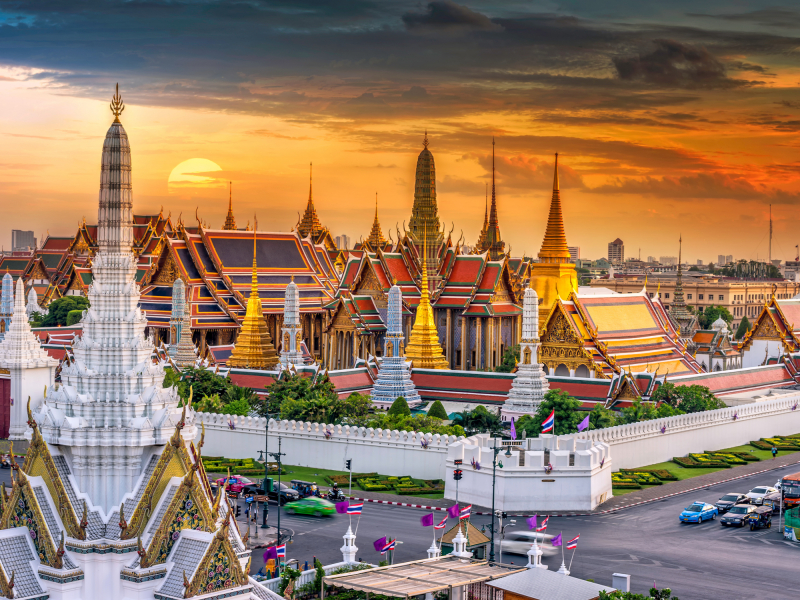
Bangkok 
Bangkok -
Ayutthaya has been the ancient capital of Thailand for 400 years (from the 14th to the 18th century). UNESCO recognized this place as an Intangible Cultural Heritage of the World in 1991. Although it was once the "capital," Ayutthaya has a peaceful and quiet beauty like the suburban countryside. With a relatively small area, it only takes you about half a day to entirely visit every corner of this place! With its magnificent beauty and prosperity, this place is like the Venice of the East. During the eighteenth century, Ayutthaya was almost destroyed in the war. However, the remnants of a golden age will undoubtedly appeal to you.
Today, the kingdom's ruins can be toured while walking the Ayutthaya Historical Park. Home to many prang (reliquary towers), wat, and stucco statues, the park is surrounded by three rivers and deep moats and covers an area of 289 hectares.
Wat Phra Mahathat is perhaps the most famous temple here, thanks to a statue of a Buddha's head entwined in tree roots. Wat Phra Si Sanphet, the largest of the temples in the park, features three large silver-looking Chedis. At the same time, Wat Yai Chai Mongkol is best known for its giant reclining Buddha and the hundreds of sitting Buddha statues surrounding the temple, all draped in golden cloth.
The best-preserved ruin in Ayutthaya Historical Park is Wat Ratchaburana. Wat Ratchaburana was created on a tiny scale to resemble the classic picture of Mount Meru in India. A tunnel inside the tower, in particular, leads to buried gold and silver riches. The Burmese, on the other hand, practically "stole" it. Ayutthaya has numerous well-known temples, each with the distinct architecture of an old metropolis. It is a historical cradle where the Thai royal family preserved valuable antiques.
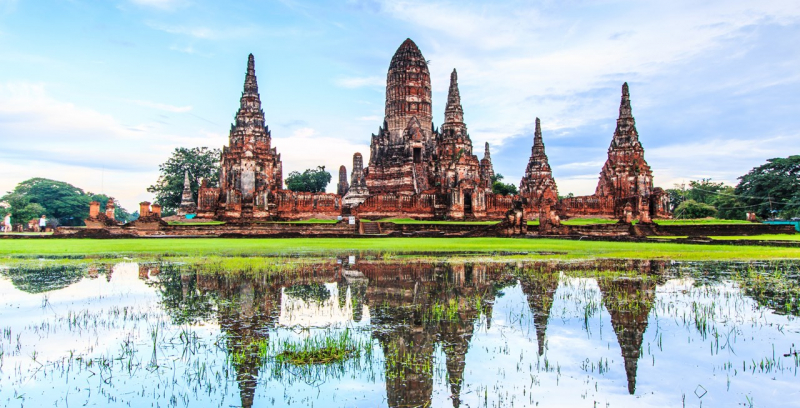
Ayutthaya 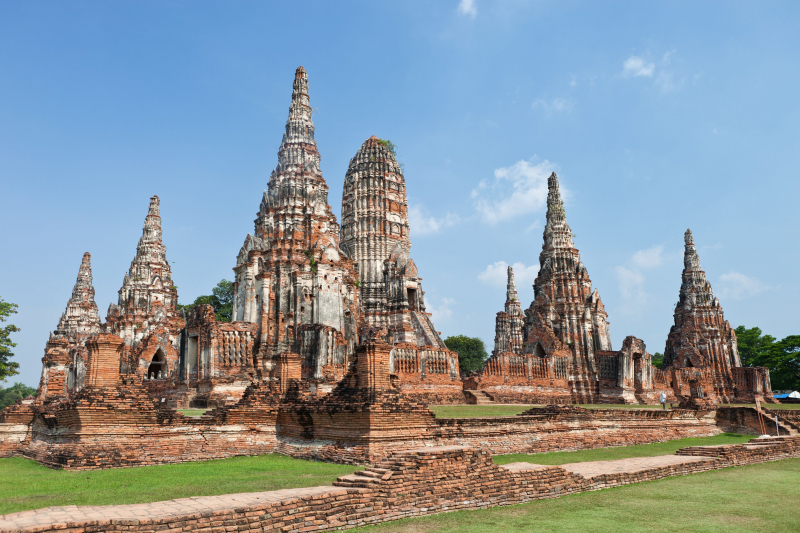
Ayutthaya -
Pattaya is always switched on and fun. This vibrant coastal city shot to fame in the early 1980s. Pattaya's beaches are constantly brimming with life from sunrise to sunset as water sports lovers and sun worshippers take to the waters. After dark, the action shifts to the streets, as revelers explore its electrified nightlife scene, where drinking and partying continue until dawn.
Apart from water sports and nightlife, Pattaya offers endless possibilities for accommodation and entertainment. It has outgrown its image as a seedy beach town to a destination for a wider audience; whether couples, families, or business travelers, Pattaya has something for everyone. Only 147km from Bangkok, Pattaya is the closest of Thailand's major beach resorts to the capital city.
The sights and sounds of Pattaya Walking Street are quite unlike somewhere else in Thailand. It is almost building on both sides of the road and many in the side streets around. The nightclub, beer bar, restaurant to the extent that the road is almost completely deserted during daylight hours. At night, however, the road comes alive with neon lights, thumping music from different genres, food vendors, street performances, and party animals from around the world. The Nong Nooch is full of bursting with some of Thailand's most remarkable flowers, displays, and landscaped gardens. The team behind them has repeatedly won international awards for designs, including 17th-century-French-style parks, a recreation of Stonehenge, creative topiary displays, and gardens created exclusively with cacti, bonsais, and tropical palms.
The last destination we think you do not want to miss is Pattaya floating markets. Correctly known as the "Four Regions Floating Market," the sub-sections of this 100,000sqm development represent the four primary areas of Thailand – the north, northeast, central, and south. This representation comes in shops and stalls selling souvenirs, fruits, food, art, handicrafts, postcards, clothing, and regular cultural shows and demonstrations. Some of the 114 vendors do indeed float, selling their wares from traditional boats and canoes. The rest are built into a sturdy stilted village, with covered walkways and stout bridges.
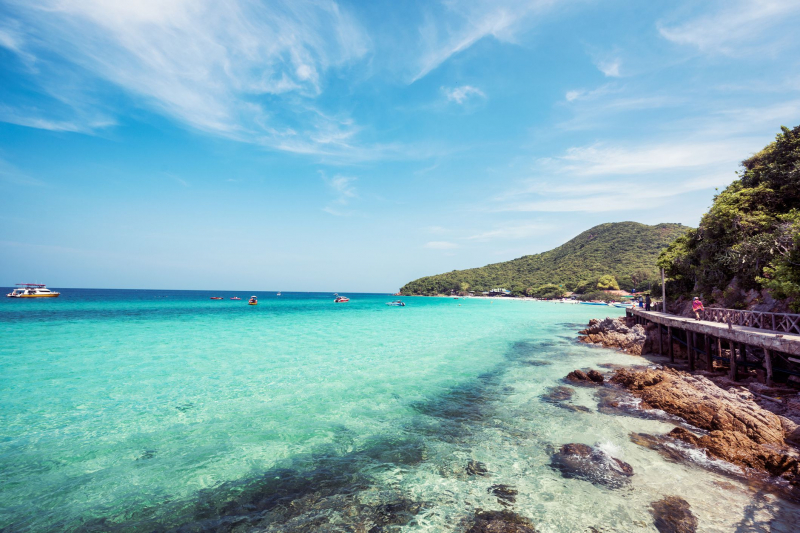
Pattaya 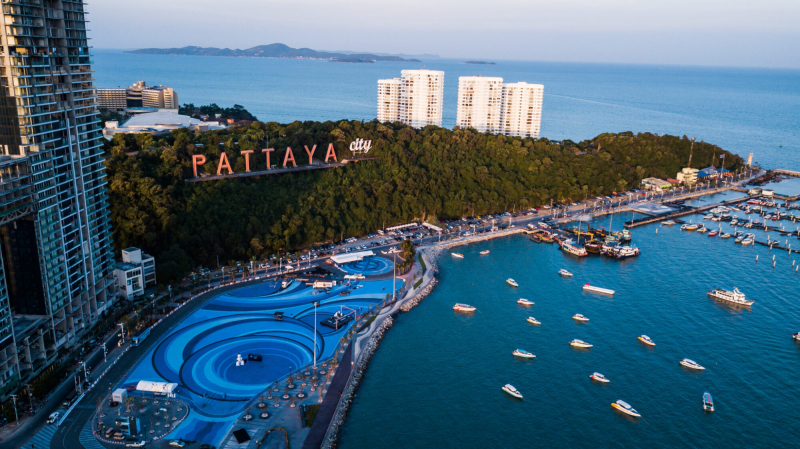
Pattaya -
Chiang Mai is a country of misty mountains and colorful hill tribes, a playground for seasoned visitors, a shopping utopia, and an adventurer's joy. Interested visitors may broaden their horizons with Thai massage and cookery classes in Chiang Mai. Others will be blown away by the diversity of handicrafts and antiquities. The wild kid will discover a thriving nightlife, while the epicure will be able to luxuriate in exquisite food. Chiang Mai, despite its modest size, genuinely offers it everything.
Chiang Mai was founded in 1296 as the capital of the ancient Lanna Kingdom and is located 700 kilometers (435 miles) north of Bangkok in a beautiful valley on the banks of the Ping River. Today, it is a site where the past and the present blend perfectly, with new structures coexisting with historic temples.
Among the most incredible things to do in Chiang Mai is exploring the city's stunning temples and distinctive sights. Chiang Mai, the ancient capital of the former Lanna Kingdom, is culturally rich. The Old City - an attraction in and of itself – is home to most of the most significant temples, museums, and other notable attractions, with many more just beyond the historic city walls and moat.
Chiang Mai Old City is practically a living museum. Its narrow streets are lined with beautiful temples, old shophouses, and historical buildings, surrounded by the crumbling ancient walls and the moat. It's a pretty small, compact place, so you can quickly get around on foot without tiring yourself out, allowing you to enjoy the city's relaxed atmosphere and exciting scenery. Naturally, the temples are the star attractions of the Old City. You should check out Wat Chedi Luang, Wat Phra Singh, and Wat Phan Tao, but several more are within easy reach.
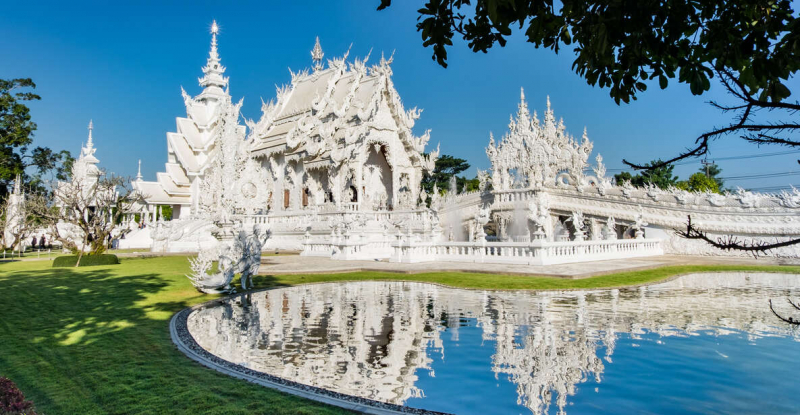
Chiang Mai 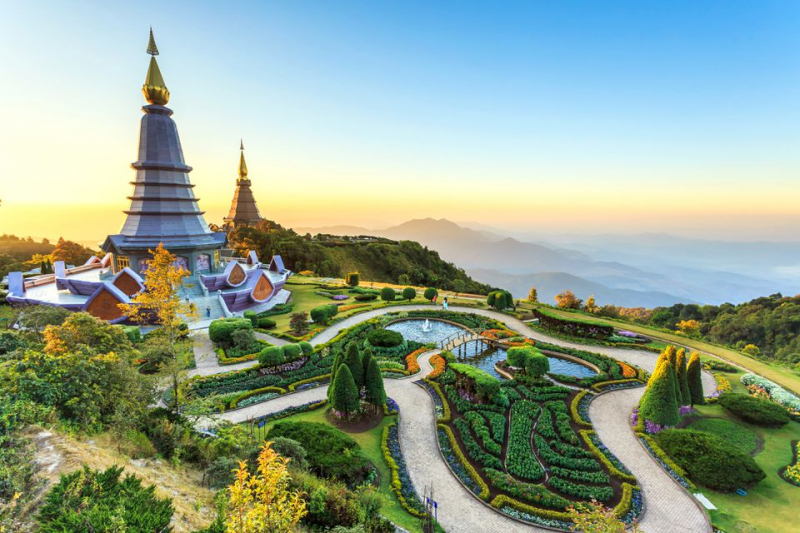
Chiang Mai -
Krabi is an ideal vacation option for anyone searching for a tranquil getaway in southern Thailand. The province, located between Phang Nga and Trang, has a beautiful landscape inland and at sea. Krabi has approximately 150 islands off its 150km-long coastline (several of which have excellent white-sand beaches and turquoise seas), a jungle-covered interior, towering limestone cliffs, caverns, waterfalls, and rare fauna. Island hopping, snorkeling, rock climbing, sea kayaking, jungle hiking, and scuba diving are among the most popular activities available in Krabi.
From its most well-known attractions – Ao Nang, Railay, Phi Phi Islands, and Koh Lanta – to its lesser-known places – Ao Luk, Ao Nam Mao, or Ao Thalane, to mention a few – Krabi is less developed and busy than Phuket, more relaxed than Koh Samui, and just 80 minutes by plane from Bangkok. This beautiful province is the perfect getaway with accommodations ranging from basic to luxurious. Explore your comprehensive travel guide to Krabi, Thailand. It presents hotels, tours, beaches, islands, activities, restaurants, and anything else you need to plan your next trip in Krabi, as compiled by locals.
Discover the best things to do in Krabi. The whole region is fast becoming a popular tourist destination and has loads to do. Krabi has an airport that handles international and domestic flights. Considering the miles of spectacular coastline, lush hinterland, and lots of leisure activities at hand, it is no wonder that the area is growing as a tourist hotspot.
Still, one of the main attractions of Krabi is that it still is relatively untouched. The province still manages to retain its natural charm. From picturesque tropical islands to pristine natural parks, there is a lot for you to see in Krabi.
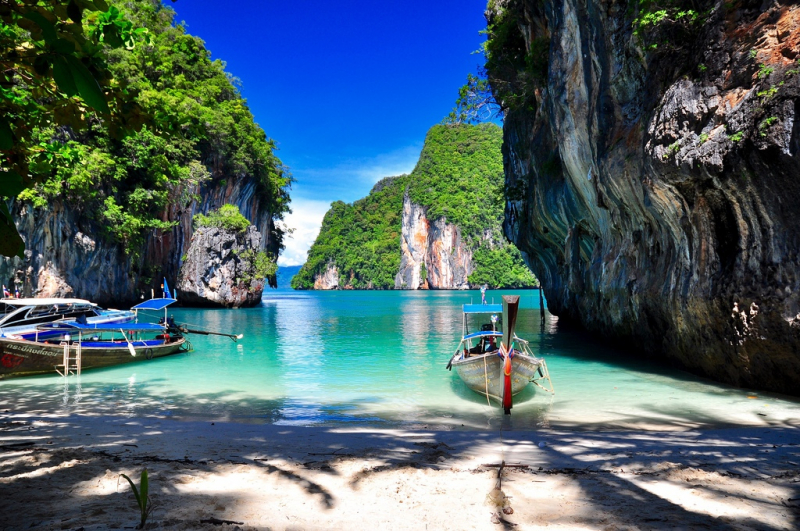
Krabi 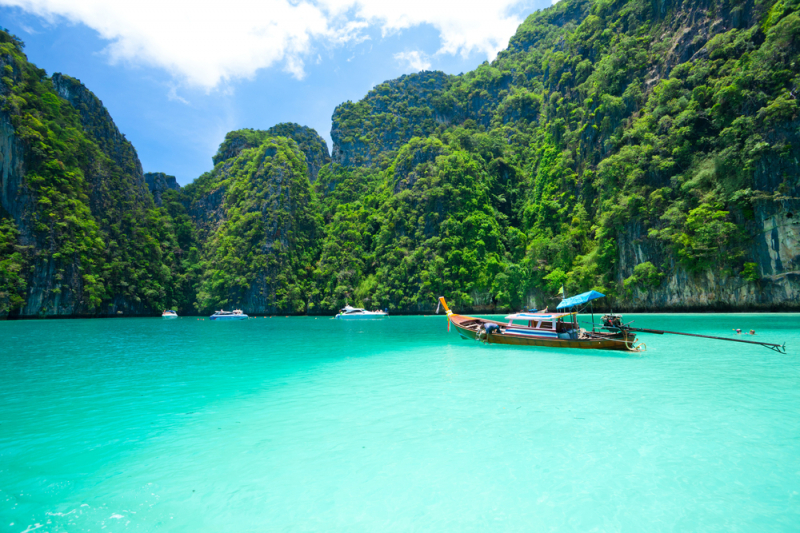
Krabi -
Phuket has beautiful white sands, nodding palm trees, glistening waters, and bustling cities, making it one of the world's best beach resorts. With hundreds of hotels to choose from, a varied selection of eating, and lots of nightlife alternatives, it caters to a wide range of interests and budgets. Aside from exploring Thailand's largest island's unique attractions, you may take an adventurous speedboat excursion to the numerous neighboring tropical islands, including the famed Koh Phi Phi, or enjoy a quiet sail around the mystical Phang Nga Bay.
Phuket has more than 30 beautiful beaches. The most popular beaches have always been Patong Beach, Kata, Karon, and Kamala, but the north has some hidden treasures for those looking for a more romantic ambiance. Phuket boasts a plethora of attractions. There's always something to see and do on Phuket Island, from natural to artificial, land-based to water-based activities. The best part is that all of these treasures are only a short drive or sail away from one another. There are strange and fantastic museums, incredible religious and cultural buildings, exotic shows, active nightlife, and some stunning beaches where you may enjoy the smooth white sand, tropical waves, and incredible views.
Phuket, located off Thailand's west coast in the Andaman Sea, is home to some of the country's most frequented beaches and is a popular beach holiday destination. Travelers may visit Kata Noi Beach for peaceful scenery, Nai Harn Beach for crystal-clear seas shaded by palm trees, and Surin Beach for luxury resorts and high-end restaurants overlooking the sea.
Phuket's spiritual side may be seen at the summit of Nakkerd Hill, where the 45-meter-tall Big Buddha is towering over the island. Wat Chalong is Phuket's most prominent temple and home to a stupa containing a bone part of Buddha. Phuket Town is worth walking about to see the Sino-Portuguese structures that line Thailand Road and the historic shophouses turned into lively enterprises and marketplaces.
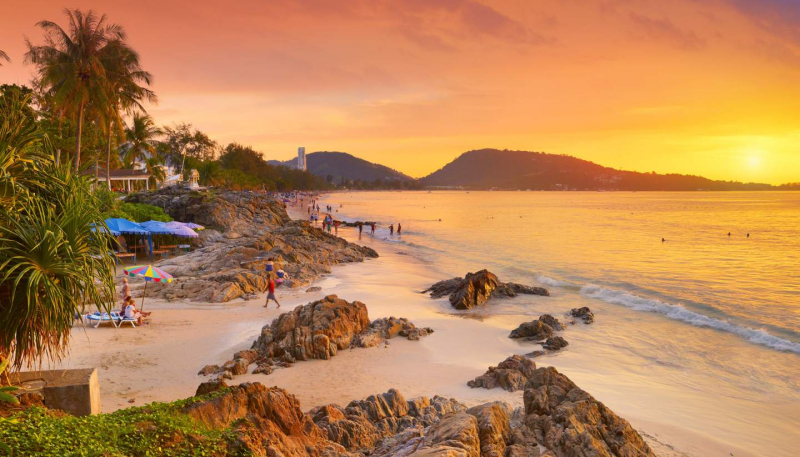
Phuket 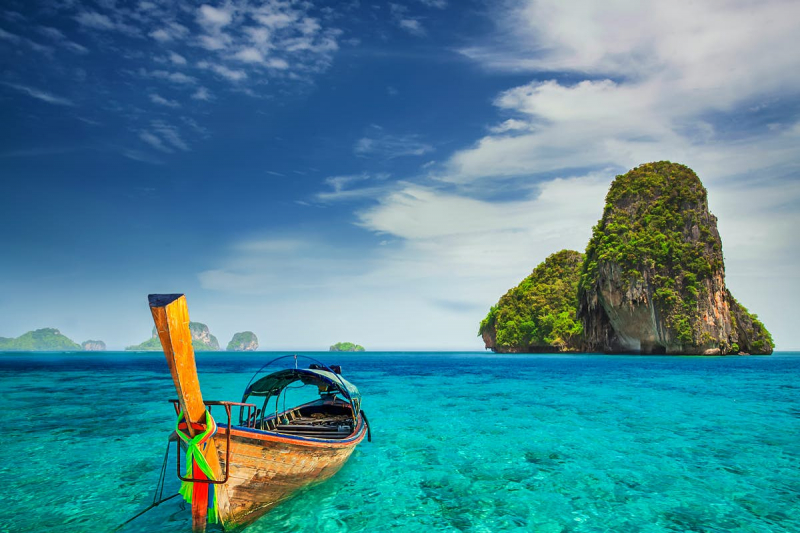
Phuket -
Sukhothai is a small city in Lower Northern Thailand that serves as the capital of the same name province. It is well known for the remains of the ancient city of Sukhothai. The name means "The dawn of happiness." The province, which occupies 6,596 square kilometers, is located on the lower limit of the northern area, 427 kilometers north of Bangkok.
The city is a renowned tourist attraction due to its proximity to the remains of Sukhothai, the Thai capital during the 13th century C.E. Sukhothai was the first capital of Siam, established by King Ramkhamhaeng. The province's temples and monuments have been restored, and Sukhothai Historical Park is a UNESCO World Heritage Site with several historical sites. Ramkhamhaeng National Museum, Ramkhamhaeng National Park, Sri Satchanalai National Park, The Royal Palace, and Wat Mahathat are well worth visiting.
Sukhothai was the capital of Siam for 120 years and was controlled by various kings. In this regard, King Ramkhamhaeng the Great was the most energetic ruler, having invented the Thai alphabet, built the groundwork for politics, monarchy, and religion, and enlarged its influence border. Though the Sukhothai Golden Age is no longer in existence, travelers should remember that respect and appreciation for the famed twin cities of Sukhothai and Si Satchanalai are highly cherished.
Wat Mahathat is the most spectacular temple on the grounds, with nine enormous stupas (the main one housing Buddha relics), a pillared pavilion, and two nine-meter-tall standing Buddha figures. Noen Prasat, a former royal residence, and Wat Si Sawai, the park's oldest temple, are two more must-sees. Photographed is Wat Sa Si, which is set in the center of a lake and is only accessible by a wooden bridge.
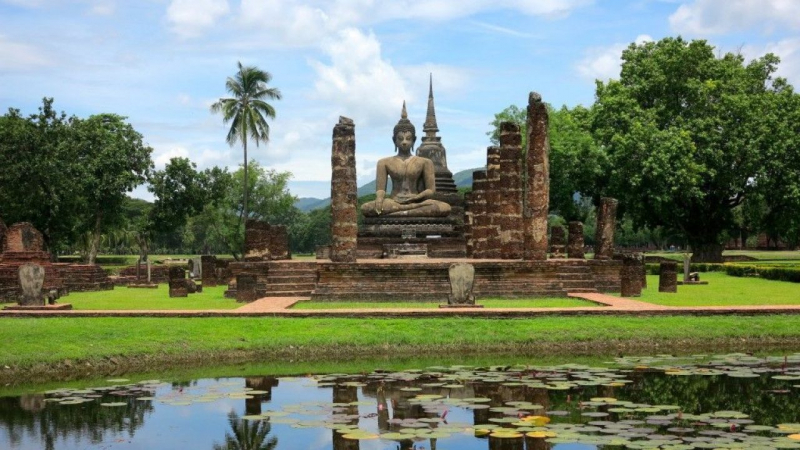
Sukhothai 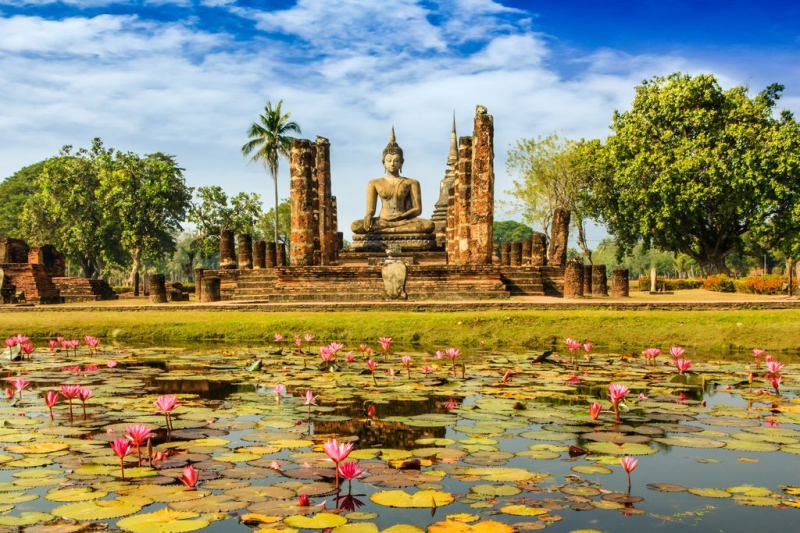
Sukhothai -
Chiang Rai City is still a tranquil provincial town with a beautiful vibe. It has a more easygoing and down-to-earth atmosphere than its sister city Chiang Mai, yet it never lacks historical and cultural treasures of its own. Founded in 1262 as the capital of the Mengrai Dynasty following Chiang Saen, the city has a strong Lanna identity today, primarily via its magnificent collection of temples, art, language, food, and music. However, unlike Chiang Mai, the city provides little variety in nightlife, entertainment, and shopping, with most of these centered in the Clock Tower region.
The city's tourist industry is rapidly emerging, beginning with its Night Bazaar, Saturday Walking Street, and Jazz Festival. The riverfront is primarily undeveloped. However, there are a few luxury hotels along the way. It is preferable to charter a long-tail boat and takes in the landscape along the two riverbanks to truly experience the splendor of the Mae Kok. Chiang Rai City is all about slowing down and relishing each moment as it comes.
Temples are a big draw in Chiang Rai, as they are in other Thai cities, with Wat Rong Khun (or White Temple) at the top of the list. Wat Rong Khun is no longer a temple but rather a privately owned property restored and reconstructed by Chalermchai Kositpipat, one of Thailand's most well-known modern visual artists. Wat Tham Pla (also home to a cave and thousands of wild macaques) is another renowned temple that may be reached by descending a staircase guarded by guarding Naga serpents.
Tiny Wat Phra Kaew, famed for formerly hosting the Emerald Buddha before being relocated to Bangkok's Grand Palace and Doi Tang mountain home to a botanical park, a former royal mansion, and a temple with spectacular views–is well worth a visit.
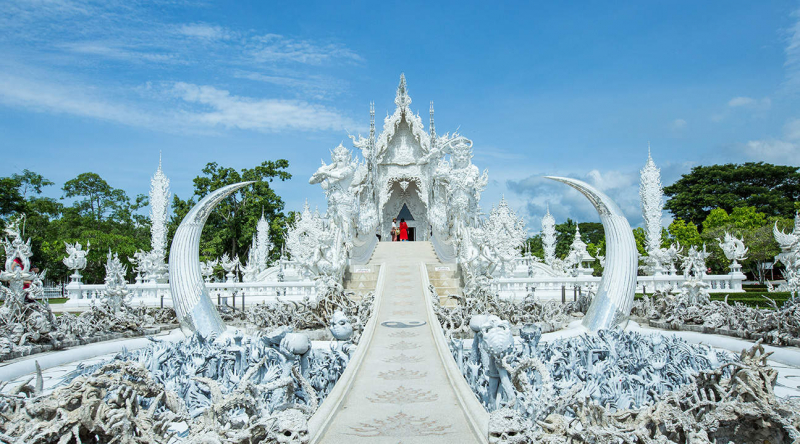
Chiang Rai 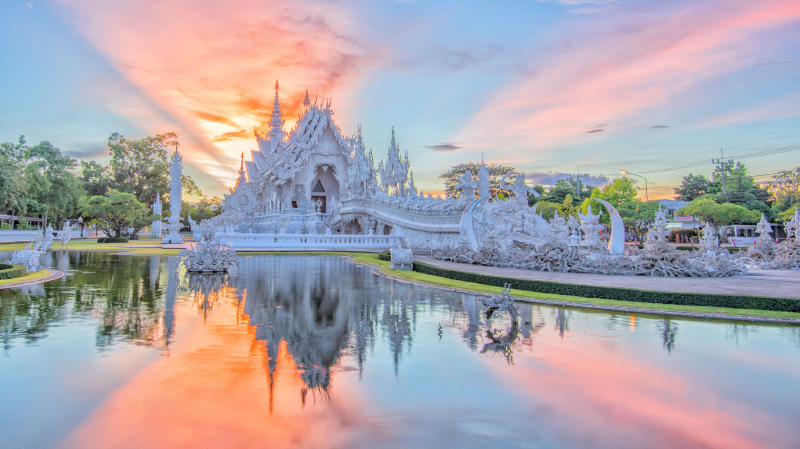
Chiang Rai -
While it's tempting to dramatize Kanchanaburi's World War II history, there is, in fact, so much more to the city than the popular trios: Death Railway, Bridge over the River Kwae (Kwai), and the Allied War Cemetery. The town offers a range of delightful diversions, whether bamboo rafting journeys along the River Kwae, Khmer temple ruins tour, or a day out shopping at the gemstone village. The scenic riverside area sets the stage for a stroll but can also become loud at night due to music from karaoke bars and discos.
Although a year-round destination, the best time to visit Kanchanaburi is November to February when temperatures are relatively more relaxed than the rest of the year; in the peak of summer (April), Kanchanaburi is one of the hottest places to be, so it's best to avoid coming during that time.
Nowadays, it's possible to walk across the bridge on narrow side platforms or take a short train from one side to the other. The Kanchanaburi War Cemetery nearby is the final resting place of the many prisoners of war who died here. At the same time, the Thailand-Burma Railway Centre recounts the story of the railway construction and the men who lost their lives for it, using interactive displays and video exhibits.
Two themed museums–the World War II Museum & Art Gallery and the JEATH War Museum–offer more insight into the times, with collections covering everything from paintings to documents to WWII weapons.
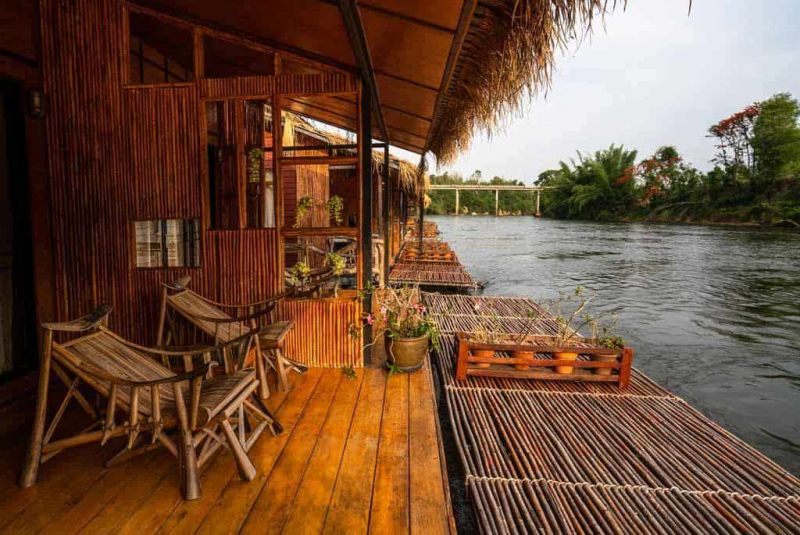
Kanchanaburi 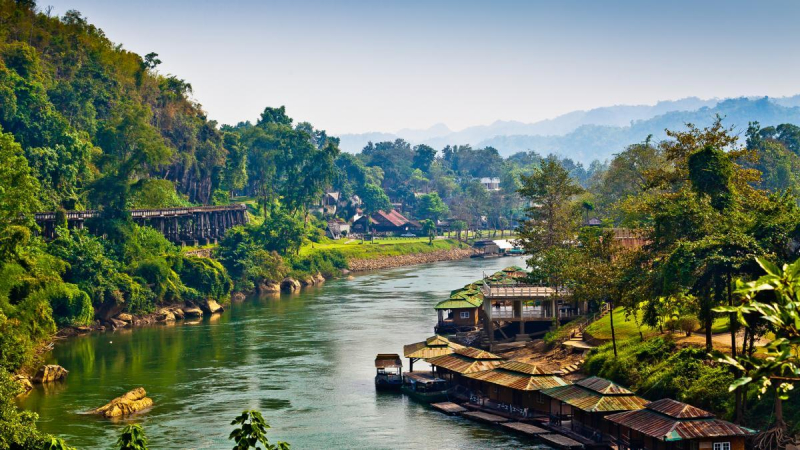
Kanchanaburi -
Khao Sam Roi Yot national park is located 45 kilometers from Hua Hin, between Pran Buri and Prachuap Khiri Khan, with the high-rise limestone mountain as its benchmark. The name of the park means a mountain with 300 peaks. With its scenic views of lofty mountains, the park is close to unspoiled beaches and coves.
A view on the Khao Daeng Peak and Khao Daeng Canal are more spots to enjoy incredible landscapes with the canal flowing the mountains, passing the mangrove forest and into the ocean. Caves like Phraya Nakhon cave are another site around the park with uncommon big karst window and a Thai-style pavilion built in honor of King Rama IV on his visit. Other caves like Tham Kaeo and Tham Sai feature peculiarly shaped stalagmites, exciting ambiance. Within the Khao Sam Roi Yot National Park also lies one of the wetlands rarely found in Thailand, Thung Sam Roi Yot Wetland, one of the most biologically diverse areas.
Pine-lined Sam Phraya Beach also has a basic campground plus a restaurant, while Laem Sala Beach is best known for being the access point to Phraya Nakhon, a massive cave with a royal pavilion built inside. Phraya Nakhon can only be reached after a steep, 30-minute uphill walk, but what awaits you inside is worth it. Sai Cave also requires an arduous climb but offers a viewpoint and a cool respite from the heat in a stalactite and bat-riddled cavern.
Khao Daeng Canal is another excellent way to explore the mangrove forests and get a closer look at the animals that call it home. You can hire a boat in the Khao Daeng village or ask about finding a ride near the park.
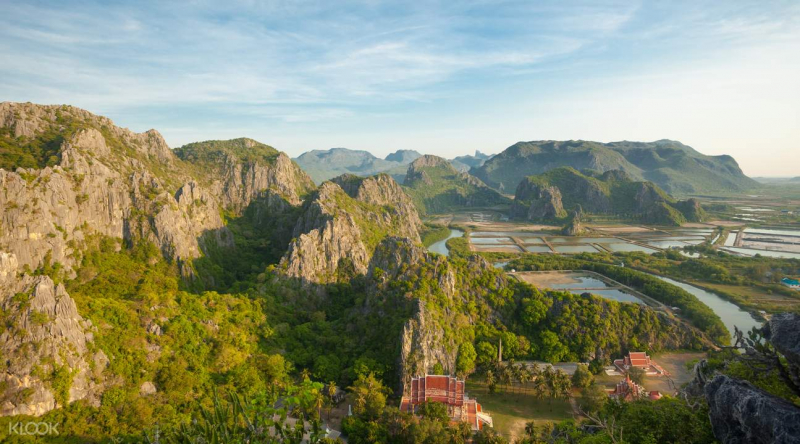
Kao Sam Roi Yot National Park 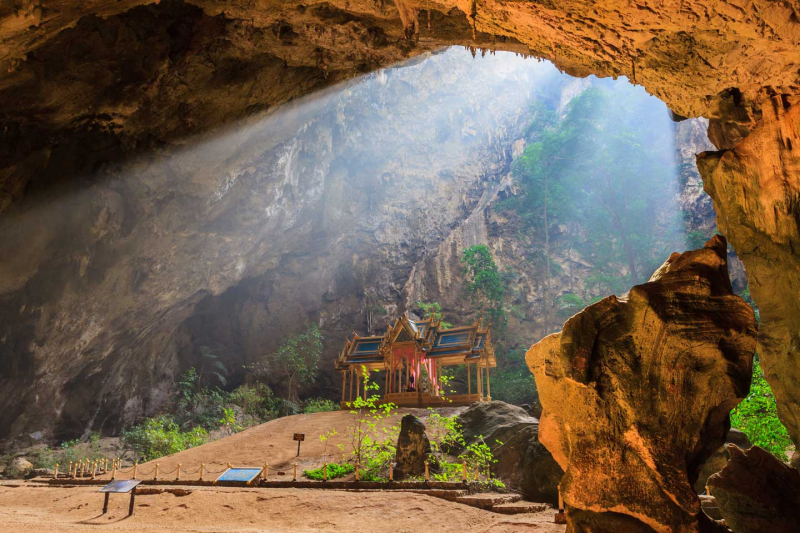
Kao Sam Roi Yot National Park -
Many visitors dream of visiting this idyllic tiny village halfway between Mae Hong Son and Chiang Mai. Pai appears to exist in its time zone, tucked deep in a valley and flanked by walls of unending mountains. Pai has three major streets, with the picturesque Pai River running through the town's eastern outskirts. Bamboo rafting and white-river rafting are two of the most significant ways to admire Pai's stunning nature and are popular among daring spirits. If you want to stay on dry land, hiking or mountain trekking is another exciting choice, in addition to visiting the town center's assortment of souvenir stores. Exploring Pai's outskirts, dotted with natural hot springs, waterfalls, and ethnic hill-tribe settlements is also an option.
Outer Pai, on the other hand, is a different story. Wat Phra That Mae Yen, located 2 kilometers from town, offers panoramic views of Pai and its lush green countryside, as well as a spectacular sunset. Pai Canyon (or Kong Lan), the World War II Memorial Bridge, Santichon Yunnanese Village, and Muang Paeng hot springs are the other attractions to take in the scenery not to bathe in because the water temperature is way too hot.
While local cuisine dominates Pai's dining, a handful of restaurants run by Thai-western couples offer typical international variety, such as pizzas, pasta, and burgers with fries. More notable include Thai French Burger & Steak (opposite bus station), Phad Thai Nawin, Pa Laeng Khao Soi (open Oct-Jan only), and Nong Beer, which serves up tasty northern Thai curries and local dishes. Besides the restaurants, Pai is home to colorful café culture, and art cafés prove to be popular hang-out places, particularly among the jaded holidaymakers from Bangkok.
Pai's colorful shopping scene is concentrated along the walking street (Rungsiyanon Road). Pai Walking Street has a much more laid-back and pleasant feel. You can browse the shops at leisure, instead of finding yourself lost in a sea of people. While Pai souvenirs, such as postcards and artsy T-shirts, seem to dominate the scene, a handful of shops carry one-off handmade jewelry collections, scented candles, stationery, and paintings.
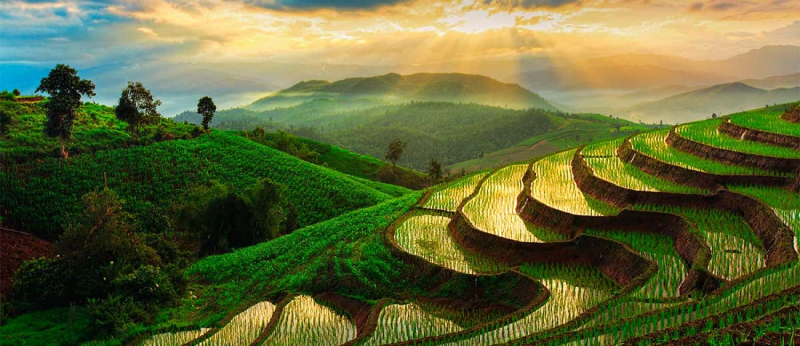
Pai 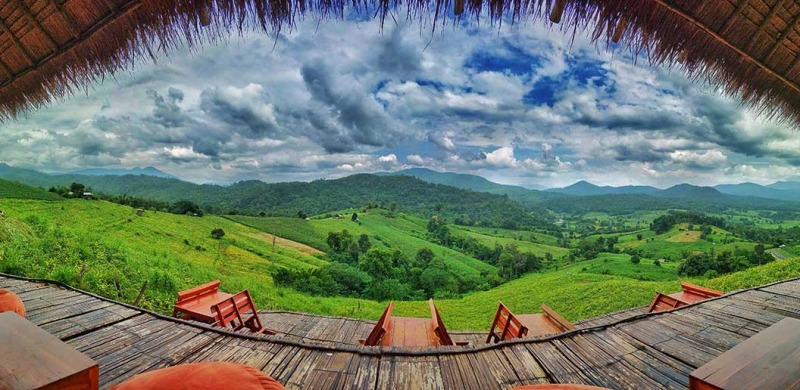
Pai -
Koh Samui is a famous resort island in Thailand's Gulf of Thailand, boasting beautiful beaches and a variety of exciting activities. This cosmopolitan beach location draws a diverse array of tourists, from budget travelers living in basic seaside bungalows to the richest vacationers enjoying the grandeur of one of Koh Samui's many 5-star resorts and villas.
On Samui, there are three main beach towns, each offering a unique experience. From the hustle and bustle of Chaweng Beach to the bustling yet relaxing ambiance of Lamai Beach and the timeless vibe of Bophut's Fisherman's Village, Koh Samui is unusual among Thailand's islands in its ability to appeal to a diverse range of tourists.
The magnificent beaches of Koh Samui are not the only attractions on the island, though they are very appealing in their own right. Several beautiful sights to enjoy the island's distinct culture and beauty. Many of the most delicate things to do in Koh Samui are low-key, natural sights that complement the island's overall vibe. You may visit some very great historical, cultural, and religious sites, as well as magnificent natural beauty.
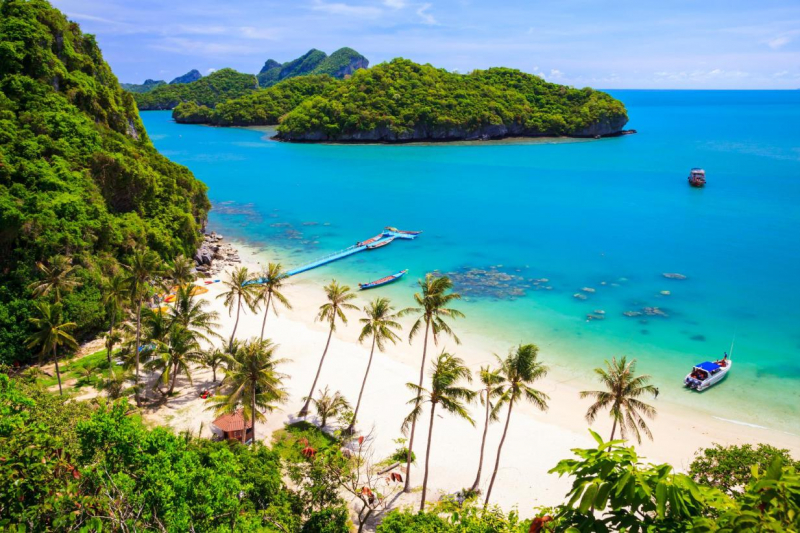
Koh Samui 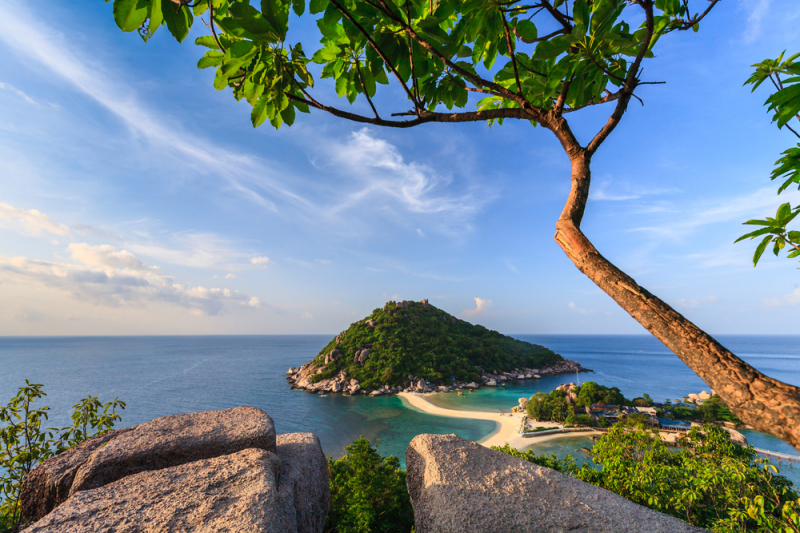
Koh Samui -
Khao Yai National Park is Thailand's oldest national park and still one of the most popular because of its large population of wild elephants. It is a UNESCO World Heritage Site, covering an area of just under 2,000 square kilometers. This breathtaking park is home to rainforests, mountains, and grasslands. This variety of terrain means an equally rich fauna, with gibbons, jackals, and even bears calling the park home. Haew Suwat Waterfall, famous for a scene in Leonardo DiCaprio's The Beach movie, can be accessed on foot when hiking the park.
Khao Yai National Park spreads across four provinces, namely Saraburi (west), Nakhon Nayok (east), Nakhon Ratchasima (north), and Prachinburi (east). The highest peak, at Khao Rom, is 1,351 meters above sea level. Blessed with a lush, mountainous landscape, fertile valleys, pounding waterfalls, and rich biodiversity, Khao Yai is a year-round getaway destination just three hours' drive from Bangkok.
The west side boasts a range of wild-west theme parks and vineyards of Thailand's award-winning labels, such as Pirom Khao Yai Reserve and Sawasdee Chenin Blanc. The south and east are peppered with many natural wonders, from Prachinburi's jungle-clad waterfalls to Wang Nam Kheo's ozone-rich valleys. Visitors can take to the trekking and biking trails here or hire a park ranger to drive them to the usually inaccessible water holes where elephants congregate to drink.
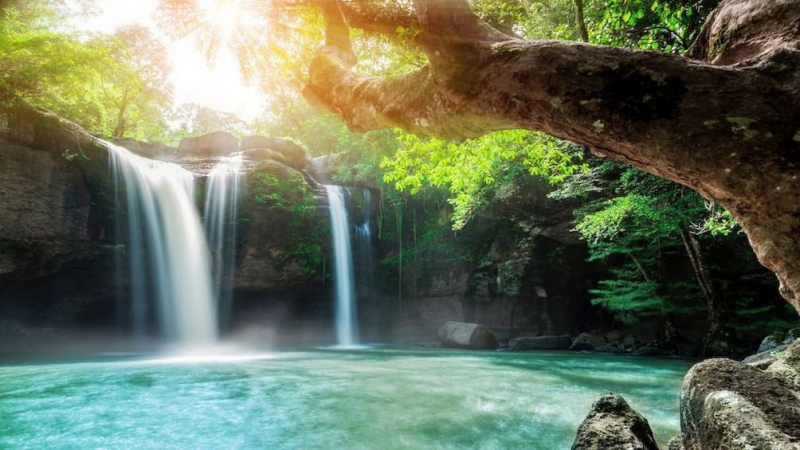
Khao Yai National Park 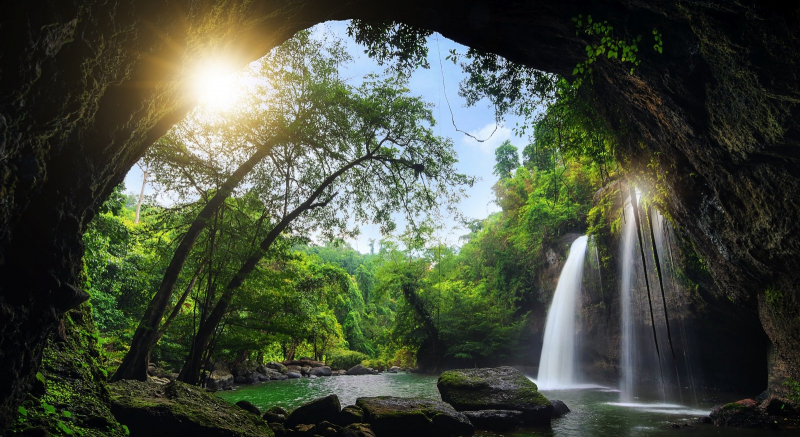
Khao Yai National Park -
Hua Hin, formerly a sleepy hamlet best known for being the king's summer hideaway, has evolved into a renowned beach resort destination. However, don't anticipate pristine blue seas or a vibrant beach scene here–this is more of a place for families or singles who prefer to tan in peace, away from the masses.
Aside from the downtown Hua Hin beach, try Cham Am Beach or Khao Takiab Beach, home to the Khao Takiab temple and hundreds of wild macaques. In December and January, Hua Hin is especially popular when European visitors escape their harsh winter.
The Thai-Victorian style Maruekhathaiyawan Palace, made entirely of teak wood and previously the summer palace of King Vajiravudh, is just a few kilometers outside the town towards nearby Cha-Am (Rama VI). Try Black Mountain Water Park for some high-octane water fun, or The Venezia, a themed shopping area with Gondola rides.
The Pranburi Mangrove Forest and the Kaeng Drachan National Park are 1.5 hours from Hua Hin and provide elevated wooden boardwalks, waterfalls, and much Thailand wildlife, including wild elephants.
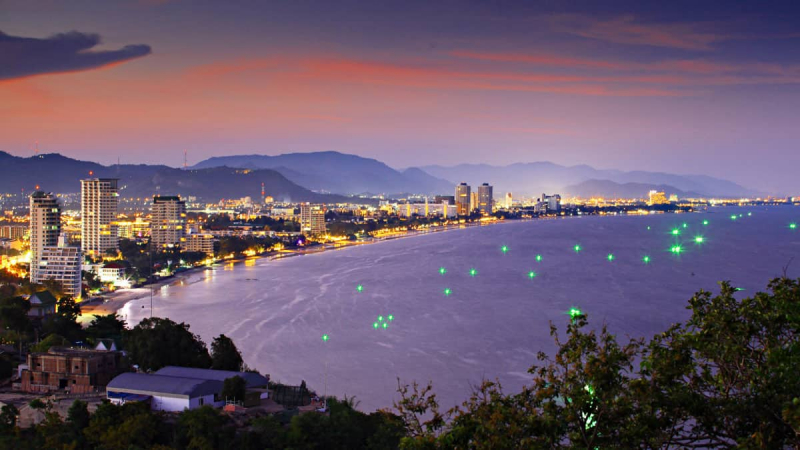
Hua Hin 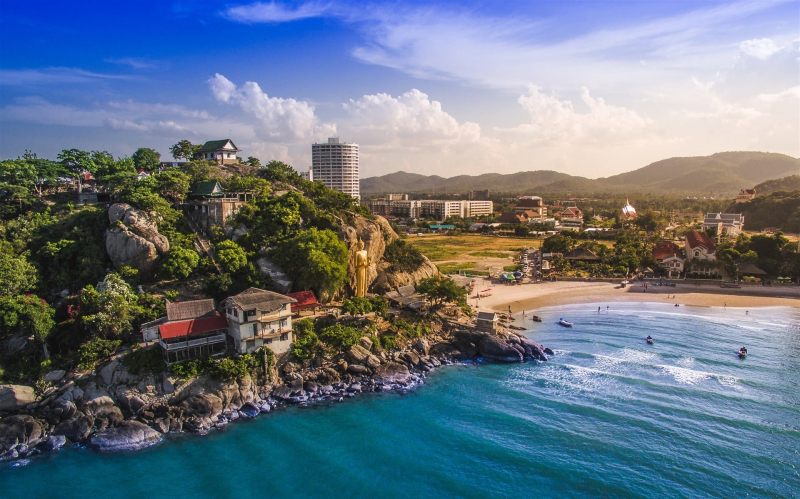
Hua Hin
















